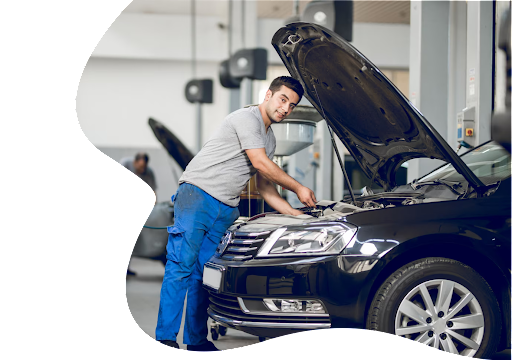Featured
Your vehicle's brakes are one of one of the most critical components in ensuring your safety and the safety of others when traveling. Routine brake assessments are crucial to maintaining optimum stopping performance and preventing expensive repairs. Whether you're an experienced automobile proprietor or a new driver, comprehending brake assessment standards can assist you stay aggressive about maintenance and guarantee your car is constantly roadworthy.
- Why Brake Inspections Issue. The more you drive, the a lot more rubbing your brake pads sustain, ultimately leading to lowered stopping performance. Without proper examination, it's tough to determine when your brakes may be in need of repair work.
A well-kept brake system guarantees fast, responsive quiting power, specifically in emergencies. It additionally aids expand the life of your lorry, as ignoring brake maintenance can result in extra extreme, pricey problems later.
- Indicators You Required a Brake Assessment. While it's vital to have your brakes inspected occasionally, certain signs may suggest that they need attention. Keep an eye (and ear) out for these warning signals:
Squeaking or Grinding Noises: Uncommon audios, specifically a high-pitched squeal or grinding sound, frequently mean that your brake pads are put on down. Resonance or Pulsation: If you really feel vibrations or a pulsing sensation when pushing the brake pedal, maybe an indicator of deformed rotors or uneven brake pad wear. Minimized Brake Responsiveness: If your brakes really feel much less responsive or you need to push the pedal harder to decrease, it may show air in the brake lines or low brake liquid. Drawing to One Side: If your lorry draws to one side when braking, it could suggest uneven brake pad wear or a brake liquid leakage. Control Panel Caution Lights: Some autos have brake-related warning lights that show issues like low brake fluid or worn brake parts. If you discover any of these symptoms, it's essential to have a specialist mechanic do a brake examination immediately.

- What Takes place Throughout a Brake Examination? During a brake inspection, a technician will inspect several crucial parts of the stopping system to ensure everything is in functioning order. Here's what you can anticipate throughout the procedure:
Brake Pads and Shoes: The mechanic will examine the density of the brake pads or footwear. If they're as well thin, they'll require to be replaced. Brake Rotors: Rotors are the discs that the brake pads press against to reduce your cars and truck down. They'll be looked for any indications of wear, scoring, or warping. Brake Fluid: Low or polluted brake liquid can impair braking efficiency. The technician will certainly check the liquid degree and high quality and leading it up or purge it if necessary. Brake Lines and Pipes: Brake lines carry fluid from the master cylinder to the brakes. The technician will look for any type of leaks, fractures, or damage to guarantee appropriate liquid flow. Brake Calipers and Wheel Cylinders: Calipers and wheel cylinders push the brake pads against the blades or drums. The technician will certainly look for wear, leaks, and correct operation. 4. Exactly how Usually Should You Have Your Brakes Inspected? The regularity of brake assessments depends on factors like your driving routines, the kind of lorry you drive, and the environment in which you drive. As a basic guideline, it's an excellent concept to have your brakes checked every 12,000 miles or as soon as a year. If you experience any of the caution indications stated earlier, it's crucial to obtain your brakes inspected right away.
For those who frequently drive in rush hour, hilly terrain, or extreme climate conditions, even more regular examinations may be necessary.
- Value of Timely Brake Fixes. When you find a problem with your brakes, it's important to resolve it immediately. Postponing brake repair services can bring about more substantial damage to your braking system, leading to higher repair expenses. In severe situations, neglecting brake problems can result in complete brake failing, which is a significant safety risk.
By remaining on top of brake upkeep and attending to concerns immediately, you guarantee that your brakes continue to perform as intended, keeping you and your travelers risk-free on the roadway.
Final Thought: Maintain Your Brakes in Top Shape. Brake inspections are a straightforward yet essential part of car upkeep. By understanding the relevance of regular examinations, understanding the indications of brake issues, and staying proactive with repairs, you can ensure your automobile's braking system stays in optimum problem. Regular brake checks give assurance, understanding that your cars and truck prepares to react when you need it most. Focus on brake maintenance-- your safety and security depends on it.
Latest Posts
Keep Your Carpet Looking Its Best with Easy, Expert Care
Stylish, Resilient Floor Tile Flooring for Every Room
Find Out the Montclare Expertise - Professional Auto Repair
